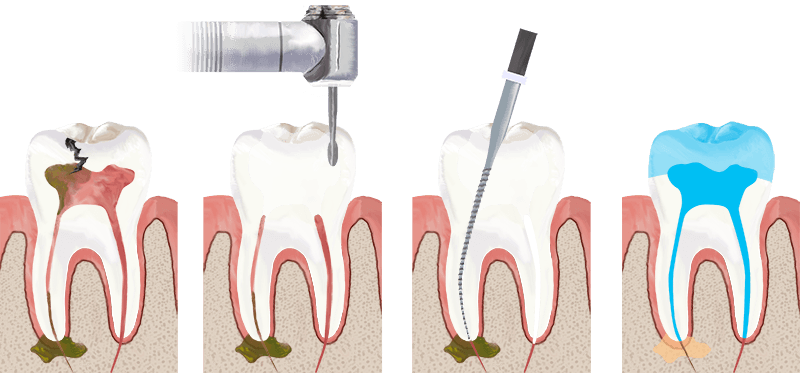Root Canal Blacksburg

Root canal treatments are used to repair teeth that are decayed or infected. Root canal Blacksburg procedures involve the removal of the nerve and pulp in order to clean and seal the inside of the tooth. If decayed or infected teeth are not treated with a root canal, the surrounding tissue may become infected.
A “root canal” is the natural cavity located in the center of a tooth. Within the root canal is the nerve of the tooth along with a soft area called the pulp.
The nerve of a tooth is not important to the tooth’s function. It’s only purpose is to sense for cold or hot. The lack of a tooth’s nerve will not affect it’s function or health.
If the nerve tissue or pulp of a tooth is damaged, it is broken down, allowing bacteria to multiply inside the tooth. Bacteria can cause infections or an abscessed (pus-filled) tooth. An untreated infected root canal may cause swelling throughout the face, loss of bone near the root, and/or drainage problems, sometimes creating a hole through the side of a tooth or through the cheek.
Severe tooth pain when chewing or from pressure, sensitivity or pain from hot or cold temperatures after the hot or cold is removed, darkening of the tooth, or swelling or pimples of gums can call be signs that you may need a root canal Blacksburg treatment.
At the beginning of the procedure, an X-ray is taken to reveal the root canals’ shape and to find possible signs of infection of the surrounding bone. Usually, the dentist will numb the area using anesthesia even if the nerve is dead.
The dentist will then place a sheet of rubber around the tooth in order to keep it dry. A hole is then drilled into the tooth in order for the pulp, bacteria, dead nerve tissue, and other fragments to be removed. The harmful material is removed with root canal files, which scrub the inner sides of the tooth. Water and sodium hypochlorite is used to wash away smaller pieces. Depending on the condition of the tooth, the dentist may either seal the tooth immediately or allow a full week to pass before doing so. If time is needed before the tooth is sealed, the dentist will place a filling in the hole to prevent anything from entering it.
The next step involves filling the interior of the tooth with a special paste. A rubber compound is also applied in the root canal. A filling is also placed in the drill hole. A crown or post may also be placed on the tooth to restore it and prevent it from being damaged.
While root canal Blacksburg procedures are known to cause a great deal of pain, many patients report that the process is no more painful than having a filling placed. There may be sensitivity in the tooth after the procedure has been completed, which can often be controlled by pain medications. It is best to avoid chewing on the repaired tooth for a while after.


